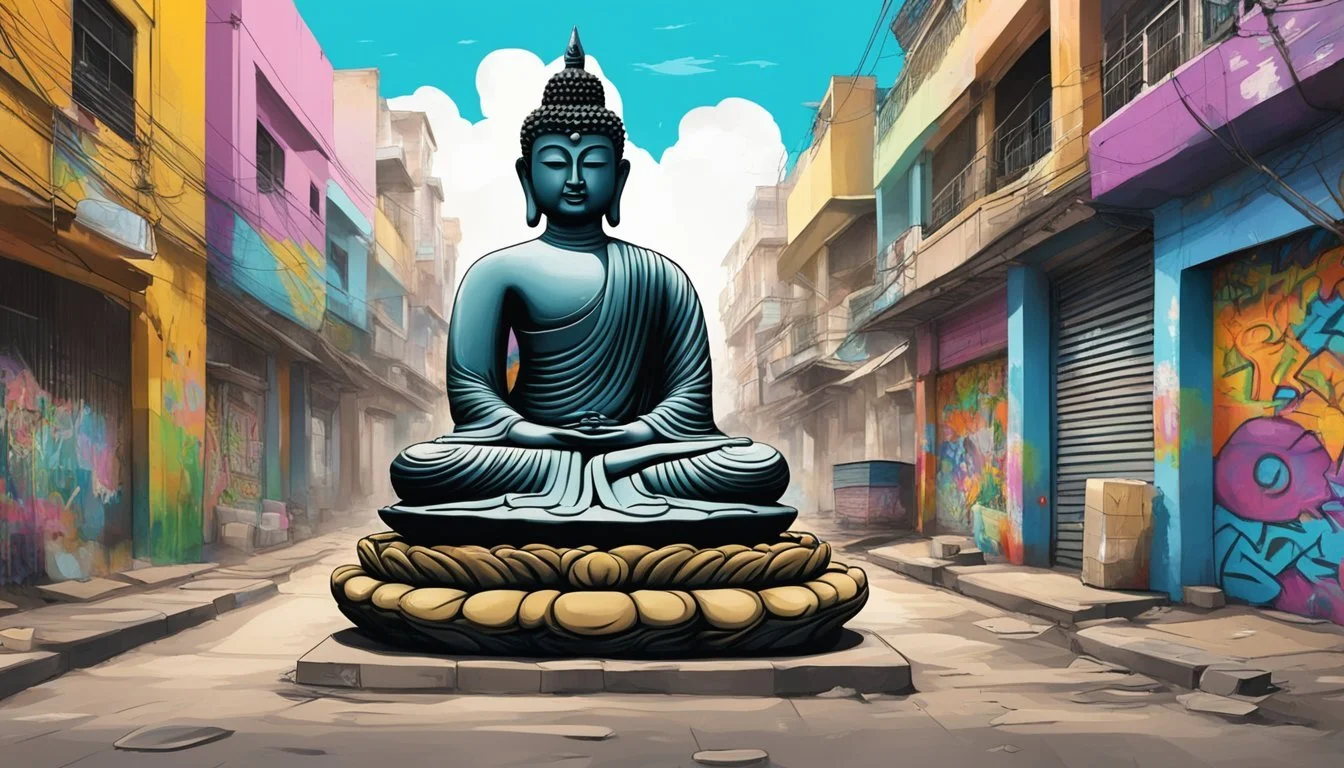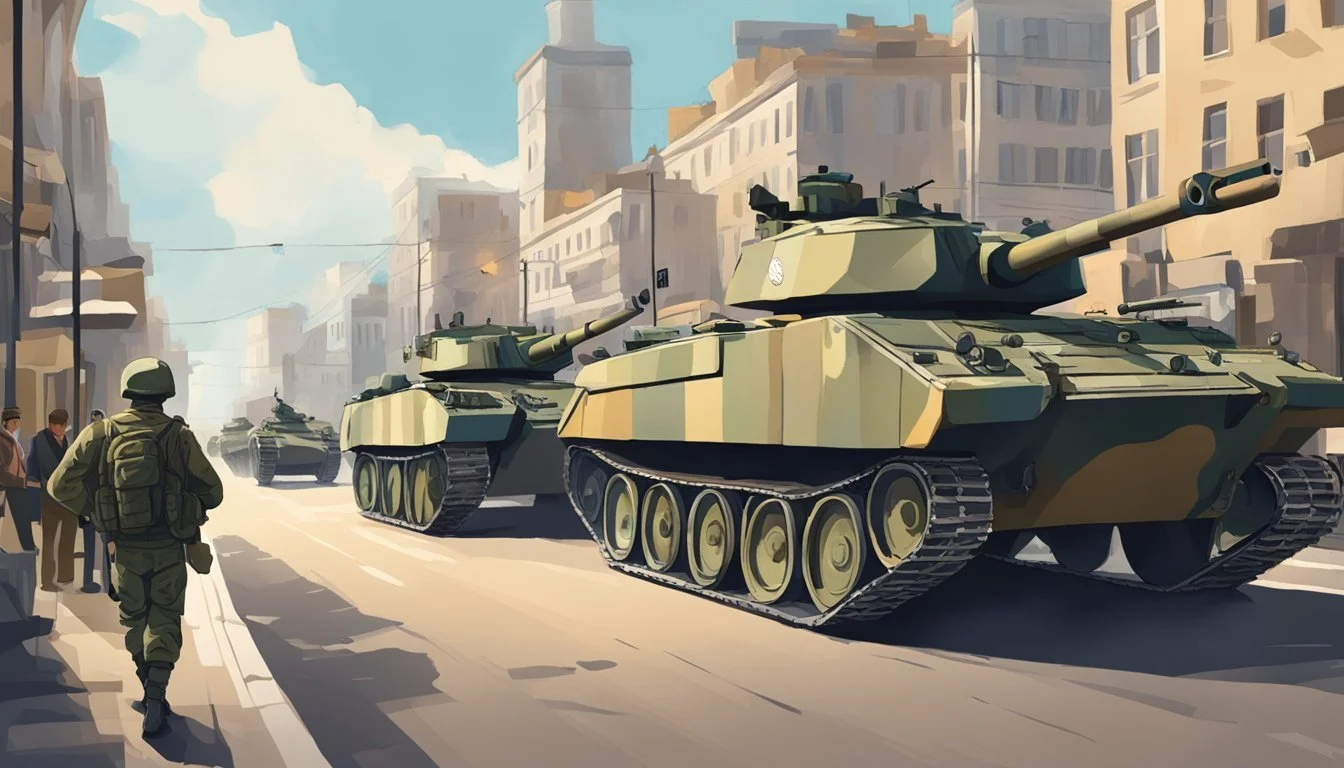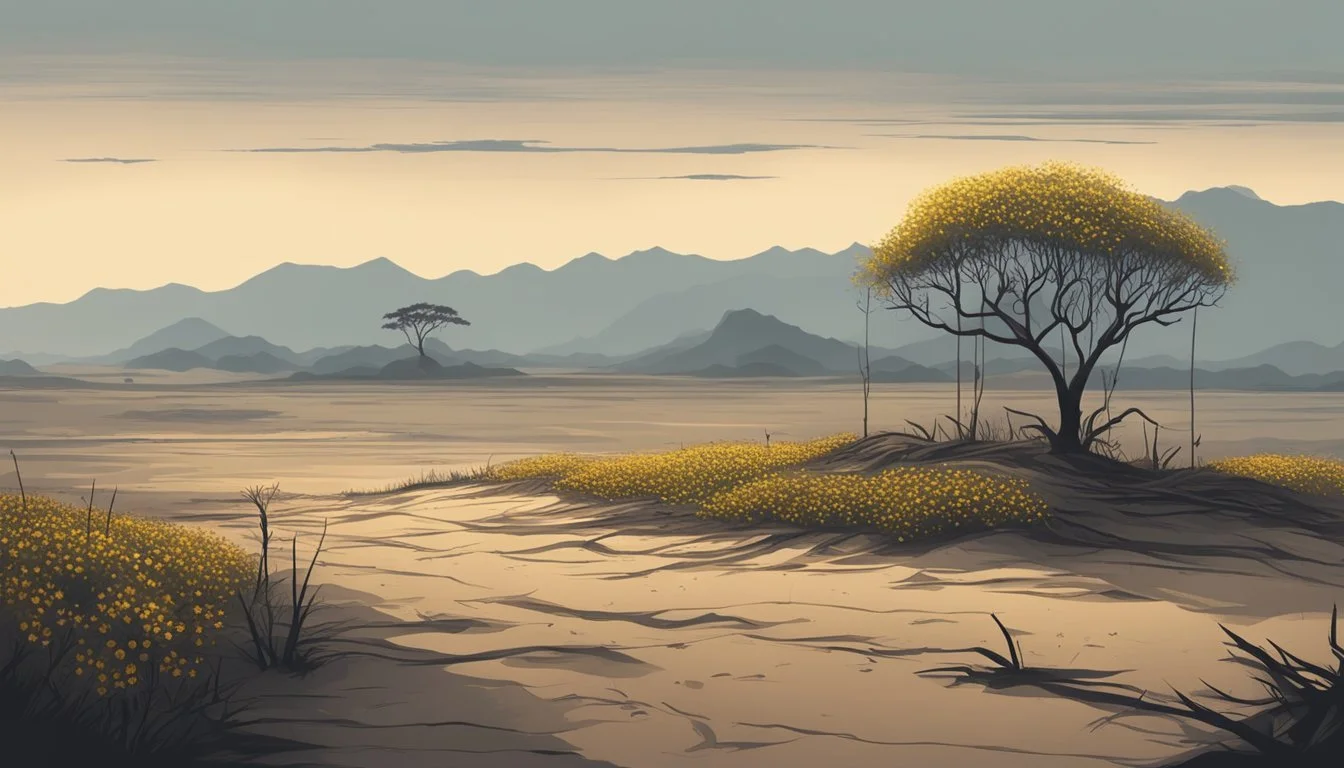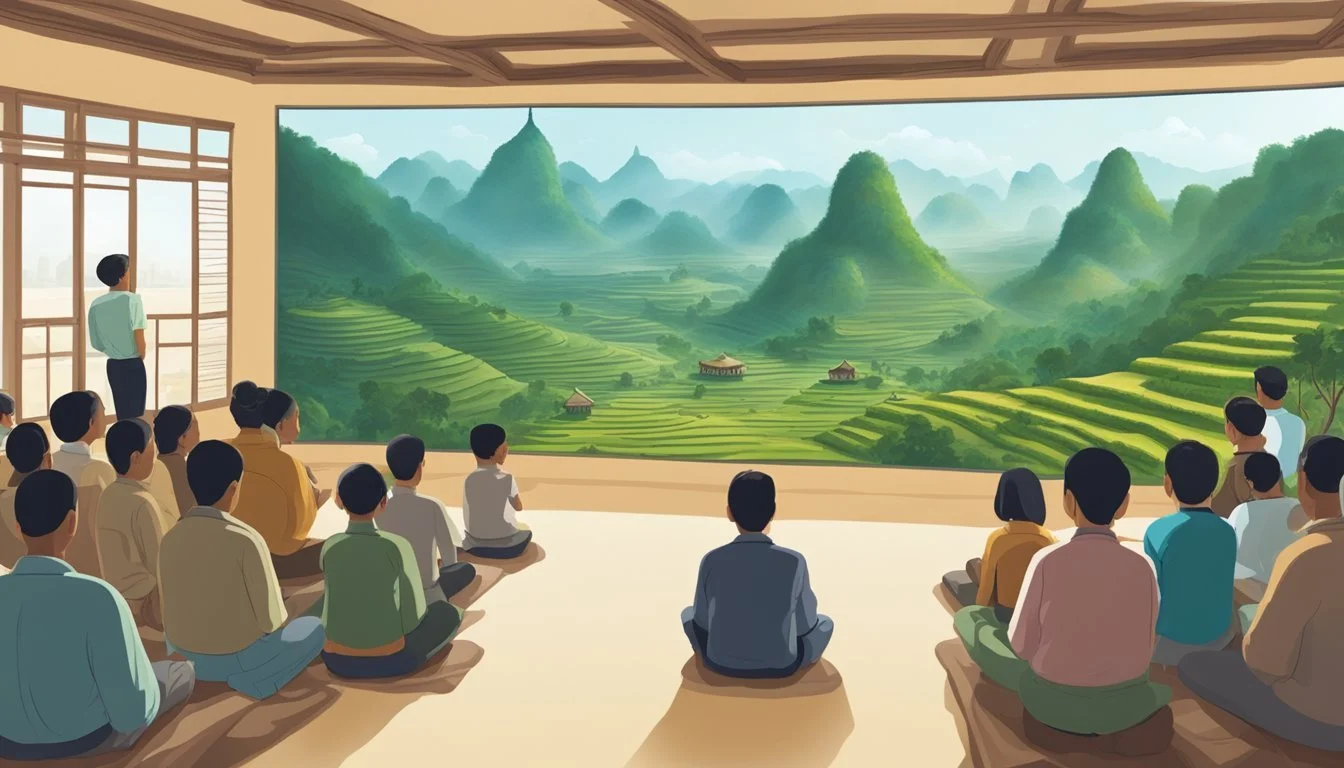10 Illuminating Documentaries About Myanmar
Unveiling a Nation's Hidden Stories
Myanmar, a country with a complex history and rich cultural tapestry, has been the subject of numerous documentaries over the years. These films offer viewers a window into the nation's struggles, triumphs, and ongoing challenges. From political upheavals to ethnic conflicts, Myanmar's documentaries provide deep insights into the country's past and present.
The selection of documentaries about Myanmar covers a wide range of topics, including the military coup of 2021, the plight of the Rohingya people, and efforts towards democracy. These films often feature firsthand accounts from Myanmar's citizens, as well as expert analysis from journalists and researchers. By exploring these documentaries, viewers can gain a more nuanced understanding of Myanmar's social, political, and cultural landscape.
1) The Venerable W.
"The Venerable W." is a thought-provoking documentary directed by Swiss filmmaker Barbet Schroeder. Released in 2017, it forms the final installment of Schroeder's "Trilogy of Evil."
The film focuses on Ashin Wirathu, a controversial Buddhist monk in Myanmar. Wirathu is known for his leadership role in anti-Muslim movements within the country.
Schroeder's documentary examines the religious tensions between Buddhists and Muslims in Myanmar. It provides insight into the daily occurrences of racism and Islamophobia in Burmese society.
The film explores how Wirathu's teachings have influenced nationalist sentiments in Myanmar. It delves into his involvement with the 969 movement and subsequent organizations promoting similar ideologies.
Through interviews and footage, "The Venerable W." offers a complex portrait of Wirathu and the societal dynamics surrounding him. The documentary presents a nuanced look at the intersection of religion, politics, and conflict in contemporary Myanmar.
2) My Buddha Is Punk
"My Buddha Is Punk" is a 2015 documentary directed by Andreas Hartmann that explores the intersection of punk rock and Buddhism in Myanmar. The film centers on Kyaw Kyaw, a 25-year-old Burmese punk musician and activist.
Kyaw Kyaw leads the punk band Rebel Riot and aims to grow the punk scene in Myanmar while raising awareness about human rights issues. His unique philosophy combines Buddhist principles with punk rock ideology, rejecting both religious and political dogmas.
The documentary follows Kyaw Kyaw as he travels across Myanmar, sharing his ideas with young people. He advocates for a new perspective that merges compassion with rebellion, addressing the country's ongoing struggle for equality and freedom.
Set against the backdrop of Myanmar's transition from military dictatorship to limited democratic reforms, the film offers insights into the country's changing social and political landscape. It highlights the persistence of human rights violations despite surface-level changes.
"My Buddha Is Punk" provides a fresh look at contemporary Myanmar through the eyes of its youth subculture. The film showcases how traditional Buddhist teachings can be reinterpreted and applied to modern social activism and musical expression.
3) This Land Is Our Land
This documentary explores the struggles of Myanmar farmers as they face environmental challenges. It focuses on five farmers grappling with deforestation, changing river routes, and coal mining.
The film highlights the impact of these issues on the farmers' livelihoods and their connection to the land. It showcases their hard work and dedication in the face of adversity.
"This Land Is Our Land" provides insight into the complex relationship between Myanmar's rural communities and their environment. The documentary brings attention to the importance of land rights and sustainable practices in the country.
Directed by David Bollier, the film offers a unique perspective on Myanmar's agricultural sector. It sheds light on the broader issues of resource management and economic development in the region.
Through personal stories and striking visuals, the documentary presents a compelling narrative about rural life in Myanmar. It encourages viewers to consider the long-term consequences of environmental changes on local communities.
4) Burma VJ: Reporting from a Closed Country
"Burma VJ" is a 2008 Danish documentary directed by Anders Østergaard. The film provides an inside look at the 2007 Saffron Revolution in Myanmar, then known as Burma.
The documentary relies on footage secretly captured by video journalists working for the Democratic Voice of Burma. These brave individuals risked their lives to document the protests led by thousands of Buddhist monks against the military regime.
"VJ" in the title stands for "video journalists." The film showcases their dangerous work in gathering and smuggling out footage from the closed country during a time of intense government repression.
The documentary combines this smuggled footage with recreations to tell the story of the uprising. It offers a rare glimpse into the realities of life under Myanmar's military dictatorship at the time.
"Burma VJ" received critical acclaim and was nominated for an Academy Award for Best Documentary Feature. The film highlights the power of citizen journalism in exposing human rights abuses and government oppression.
5) On the Inside of a Military Dictatorship
This documentary offers a revealing look at Myanmar's complex political landscape. It explores the country's challenging transition from a 50-year military dictatorship to a fledgling democracy.
The film features candid interviews with key military leaders. They provide insight into their strategic planning for Myanmar's political future.
Director Karen Stokkendal Poulsen examines the military's carefully crafted role for Aung San Suu Kyi. The documentary highlights the intricacies of power dynamics during this pivotal period.
Viewers gain a deeper understanding of the obstacles facing Myanmar's democratic aspirations. The film showcases the delicate balance between military influence and civilian leadership.
Through its incisive approach, the documentary sheds light on the complexities of Myanmar's political evolution. It offers a nuanced perspective on the country's struggle for democracy.
6) Myanmar: Bridges to Change
"Myanmar: Bridges to Change" documents an ambitious mountaineering expedition in 2013. A team of seven climbers, including five Americans and two Burmese, set out to conquer Gamlang Razi, believed to be Southeast Asia's highest peak.
The documentary captures their grueling 270-mile journey on foot through Northern Myanmar's challenging terrain. Viewers witness the climbers battling extreme heat, humidity, and the dangers of dense jungle environments.
This film offers more than just an adventure narrative. It provides a unique glimpse into Myanmar's remote regions, rarely seen by outsiders. The interactions between the international team members and local communities highlight cultural exchanges.
The expedition coincided with a period of significant political change in Myanmar. This backdrop adds depth to the story, touching on the country's gradual opening to the world after decades of isolation.
"Myanmar: Bridges to Change" combines stunning visuals of Myanmar's landscapes with personal stories of determination. It showcases both the physical challenges of the climb and the broader context of a nation in transition.
7) Seeds of Sadness
"Seeds of Sadness" is a poignant documentary that explores the challenges faced by Myanmar's rural communities. The film highlights the struggles of farmers dealing with changing climate patterns and economic hardships.
Through intimate interviews and observational footage, the documentary paints a vivid picture of life in Myanmar's agricultural heartland. It showcases the resilience of farmers as they adapt to new realities and fight to preserve their traditional way of life.
The film also examines the impact of government policies on rural areas. It reveals how land seizures and inadequate support have left many farmers feeling abandoned and uncertain about their future.
"Seeds of Sadness" offers a rare glimpse into a side of Myanmar often overlooked by international media. By focusing on personal stories, the documentary brings a human face to complex issues affecting the country's rural population.
The film's stunning cinematography captures the beauty of Myanmar's countryside, contrasting it with the harsh realities faced by its inhabitants. This visual approach effectively conveys the deep connection between the people and their land.
8) Lady of No Fear
"Lady of No Fear" is a compelling documentary that offers an intimate look into the life of Aung San Suu Kyi, Myanmar's prominent pro-democracy leader. The film explores her journey from a family-oriented individual to a symbol of freedom and human rights in Myanmar.
The documentary provides valuable insights into Suu Kyi's non-violent struggle for democracy, which began in 1988. It highlights her unwavering commitment to her cause, even in the face of prolonged house arrest and separation from her family.
Through interviews and archival footage, the film paints a nuanced portrait of Suu Kyi as both a public figure and a private individual. It examines the personal sacrifices she made in pursuit of her political ideals.
"Lady of No Fear" also sheds light on the impact of Suu Kyi's activism on her closest friends and family members. The documentary offers a balanced view of her life, presenting both her strengths as a leader and the challenges she faced.
The film serves as an important historical record, documenting a crucial period in Myanmar's political landscape. It provides viewers with a deeper understanding of Suu Kyi's role in shaping the country's push for democratic reforms.
9) Aung San Suu Kyi: The Road to Democracy
Aung San Suu Kyi's journey as a democracy icon in Myanmar spans decades. Born to independence hero General Aung San, she became a symbol of hope for her country's future.
In the 1990s, Suu Kyi gained international recognition for her non-violent struggle against military rule. Her efforts earned her the Nobel Peace Prize in 1991, solidifying her status as a global advocate for democracy.
Despite facing house arrest for nearly 15 years, Suu Kyi remained committed to her cause. Her resilience inspired many Burmese citizens to continue pushing for political reform.
In 2015, Suu Kyi's party won a landslide victory in Myanmar's first openly contested election in 25 years. This marked a significant step towards democratic governance in the country.
As State Counsellor, Suu Kyi faced challenges in balancing international expectations with domestic realities. Her leadership role brought both praise and criticism as Myanmar navigated its complex political landscape.
The 2021 military coup once again thrust Myanmar into turmoil, with Suu Kyi facing detention. Her ongoing struggle highlights the fragile nature of democracy in the country and the continuing influence of military power.
10) The Rohingya: Silent Abuse
"The Rohingya: Silent Abuse" is a documentary that sheds light on the plight of the Rohingya people in Myanmar. The film, produced by Al Jazeera, explores the systematic persecution and discrimination faced by this ethnic minority group.
The documentary examines the complex historical and political factors that have contributed to the Rohingya crisis. It provides insight into the struggles of a community denied citizenship and basic rights in their own country.
Filmed in February 2017, the documentary captures events leading up to a major crisis. Following its release, over 700,000 Rohingya were displaced, seeking refuge in neighboring Bangladesh.
The film offers a glimpse into life in Rakhine State, where most Rohingya resided. It presents interviews with affected individuals and human rights activists, offering firsthand accounts of the ongoing situation.
"The Rohingya: Silent Abuse" serves as an important record of a humanitarian crisis that has drawn international attention. It aims to raise awareness about the challenges faced by this marginalized community in Myanmar.
Historical Context of Myanmar's Documentaries
Myanmar's documentary filmmaking has evolved alongside the country's complex political and cultural landscape. Filmmakers have captured critical moments in the nation's history, providing unique perspectives on Myanmar's struggles and triumphs.
Political Landscape and Its Influence
Myanmar's turbulent political history has deeply impacted its documentary traditions. The country's transition from British colonial rule to independence in 1948 sparked early documentary efforts. These films often focused on nation-building and cultural identity.
The military coup of 1962 ushered in decades of censorship and control. During this period, documentaries became tools for government propaganda. Independent filmmakers faced significant challenges in producing honest portrayals of Myanmar's realities.
The 2010s saw a brief period of relative openness. This allowed for more critical documentaries exploring topics like ethnic conflicts and human rights issues. However, the 2021 coup has once again restricted filmmakers' freedoms.
Cultural Narratives Through Film
Myanmar's documentaries have long served as vehicles for preserving and sharing cultural heritage. Filmmakers have documented traditional practices, religious ceremonies, and diverse ethnic communities across the country.
Early documentaries often romanticized rural life and ancient traditions. As the medium evolved, directors began tackling more complex cultural issues. Films explored topics like changing gender roles, urbanization, and the impact of globalization on Myanmar's society.
Recent years have seen an increase in documentaries focusing on Myanmar's ethnic diversity. These films highlight the struggles and resilience of groups like the Rohingya, Kachin, and Karen peoples. Such works provide crucial insights into the country's ongoing challenges with national identity and reconciliation.
Impact of Documentaries on Public Perception
Documentaries have the power to shape public opinion and drive societal change. They provide viewers with unique perspectives on complex issues, often leading to increased awareness and action.
Social Awareness and Advocacy
Documentaries expose audiences to important social issues, sparking conversations and inspiring advocacy. "An Inconvenient Truth" (2006) brought climate change to the forefront of public discourse. The film's release marked a turning point in environmental awareness, transforming the topic from a fringe issue to a mainstream concern.
Similarly, "Super Size Me" (2004) shed light on the health impacts of fast food. This documentary led to changes in McDonald's menu offerings and increased public scrutiny of the fast food industry.
Documentaries can also challenge existing beliefs. "The Cove" (2009) revealed the brutal practice of dolphin hunting in Japan. Its graphic footage shocked viewers worldwide, leading to international pressure on Japan to address the issue.
Global Reach and Recognition
Documentaries have the potential to reach global audiences, bringing attention to local issues on an international scale. Film festivals and streaming platforms have expanded the reach of these films.
"Fahrenheit 9/11" (2004) won the Palme d'Or at Cannes Film Festival, a prestigious recognition that boosted its visibility. The film grossed over $200 million worldwide, demonstrating the commercial potential of documentaries.
Streaming services like Netflix have further increased documentary accessibility. "Making a Murderer" (2015) became a global phenomenon, sparking widespread debate about the US justice system.
Social media has amplified documentary impact. Viewers can easily share clips and discuss films online, extending their influence beyond the initial viewing experience.






